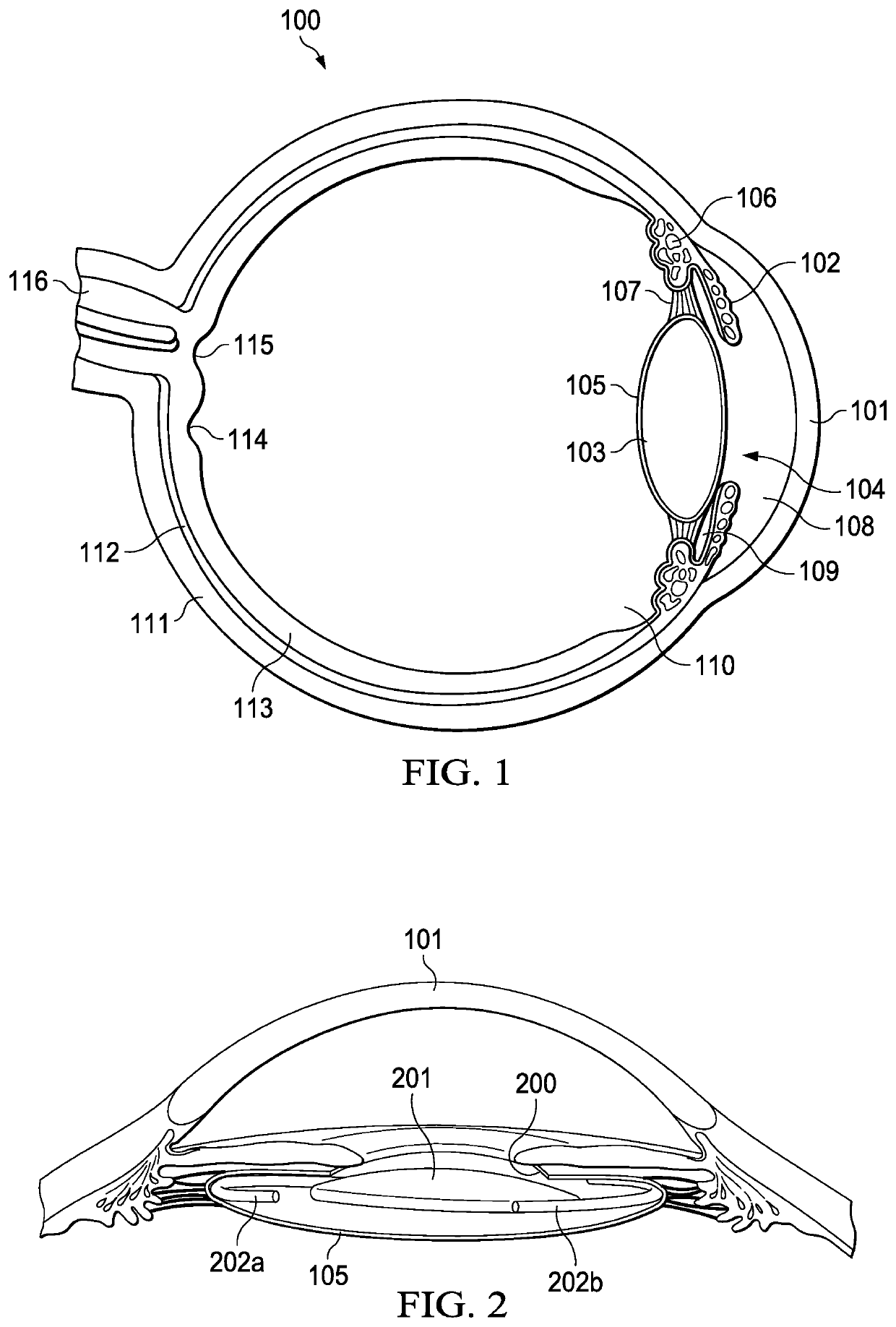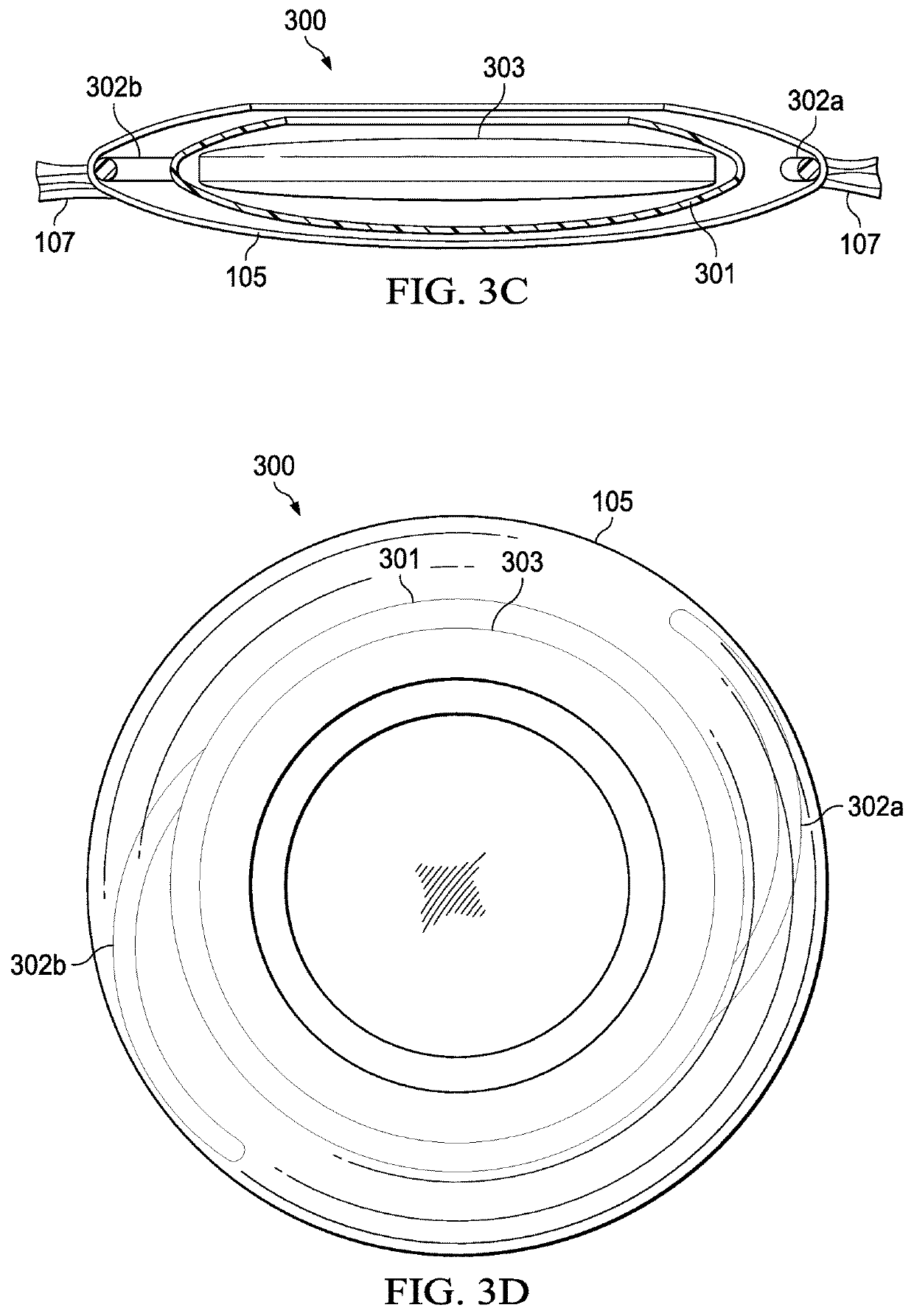Vision correction systems and methods for using an intraocular lens enclosed in an inner capsulated bag
a technology of intraocular lens and inner capsulation, which is applied in the field of ophthalmological surgery, can solve the problems of affecting the accuracy of vision correction, and affecting the accuracy of vision correction, and achieves good distance acuity and near visual acuity
- Summary
- Abstract
- Description
- Claims
- Application Information
AI Technical Summary
Benefits of technology
Problems solved by technology
Method used
Image
Examples
Embodiment Construction
[0022]The principles of the present invention and their advantages are best understood by referring to the illustrated embodiment depicted in FIGS. 1-5 of the drawings, in which like numbers designate like parts.
[0023]FIG. 1 is a cross-sectional diagram illustrating the basic anatomy of a typical human eye 100. The primary structures include the cornea 101, iris 102, crystalline lens 103, and pupil 104. Lens 103 is enclosed by the capsular bag 105, which is supported by suspensory ligaments 107. The ciliary body 106 includes the ciliary muscle that controls focusing of capsular bag 105. The anterior chamber 108 spaces cornea 101 from the anterior portion of lens 103 and the anterior portion of iris 102. The posterior chamber 109 is disposed between the posterior portion of iris 102 and suspensory ligaments 107. The vitreous body 110 is disposed behind the posterior portion of capsular bag 105.
[0024]The sclera 111 or “white” of the eye provides the outer supporting wall of the eye an...
PUM
 Login to View More
Login to View More Abstract
Description
Claims
Application Information
 Login to View More
Login to View More - R&D
- Intellectual Property
- Life Sciences
- Materials
- Tech Scout
- Unparalleled Data Quality
- Higher Quality Content
- 60% Fewer Hallucinations
Browse by: Latest US Patents, China's latest patents, Technical Efficacy Thesaurus, Application Domain, Technology Topic, Popular Technical Reports.
© 2025 PatSnap. All rights reserved.Legal|Privacy policy|Modern Slavery Act Transparency Statement|Sitemap|About US| Contact US: help@patsnap.com



